Refrigerator in a niche
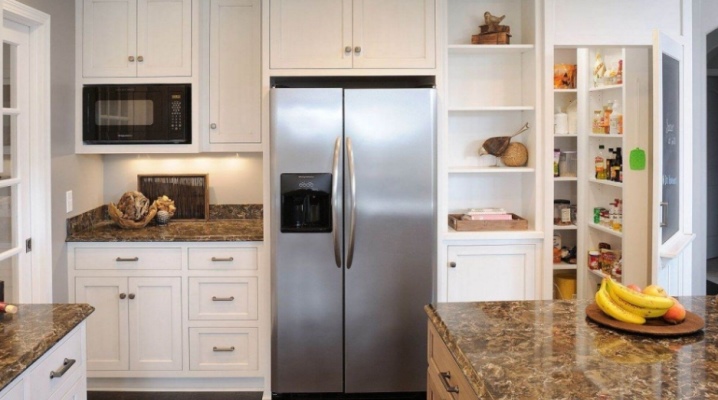
Usually, the refrigerator stands out against the background of other items of the kitchen interior, and this does not in the best way affect the harmony of the room design. But you really want it so that it does not get out of the general picture of the design of the room. If you want to solve this problem, but are not ready to move the unit to a room or corridor, then we suggest that you place it in a special niche. Such a partially built-in refrigerator will make the appearance of the kitchen more aesthetically pleasing, which means that it will be more pleasant to be on it.

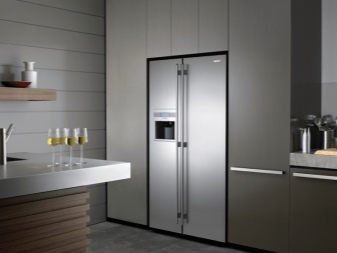
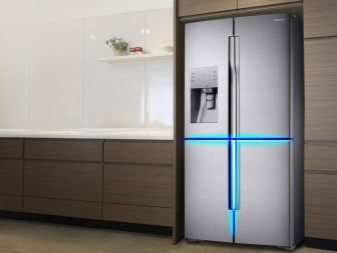
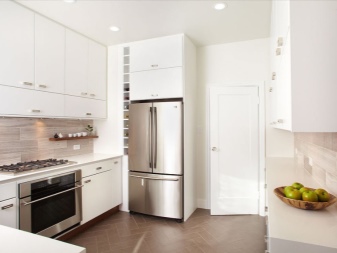
Advantages and disadvantages
If there is a suitable place in your kitchen, then you can equip a special niche in it. It is advisable to make it before finishing. To begin with, a suitable metal profile is selected, and then it is covered with drywall. It is also allowed to arrange a door for a niche, which can have a sliding or other look. If you put this idea into practice correctly, you get a design like built-in kitchens.
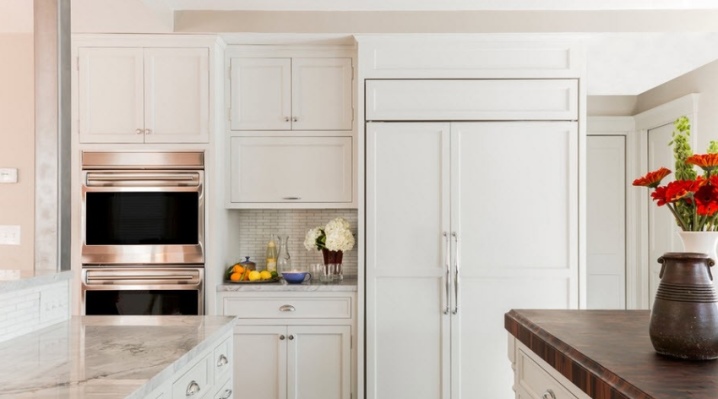
When arranging a niche, metallic refrigerators are often chosen. This color looks stylish, and its shade is easy to match with a metal oven, stove, dishwasher and other household appliances. White refrigerators look good in niches too. There are many similar interior solutions using white cabinets.
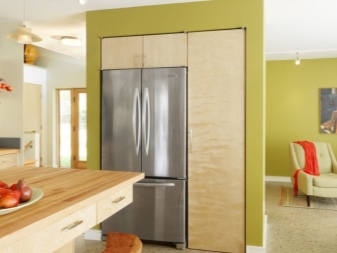
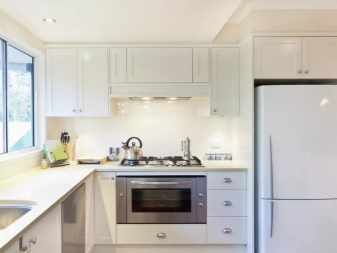
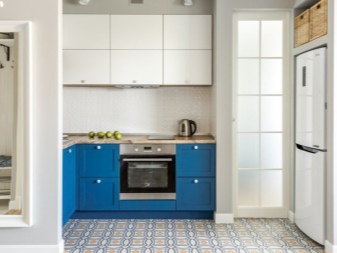
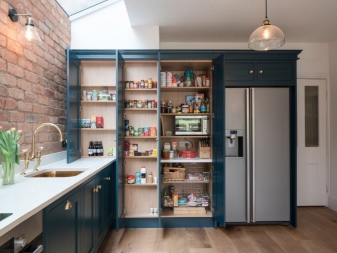
Such a design solution as installing a refrigerator in a niche has its advantages and disadvantages. Let's consider the pros in more detail.
- The external arrangement of the kitchen wins immediately. Even if the refrigerator door remains the same, it will look much more organic. And if there is also a shelf or cabinet above it, made in the style of kitchen cabinets, then the room will change beyond recognition.
- After installation in a niche, the refrigerator will make less noise.
- The influence of harmful factors on the refrigerator mechanism is minimized - dust, sun rays, pollution.
- This technique contributes to a more rational use of free space in a small room.
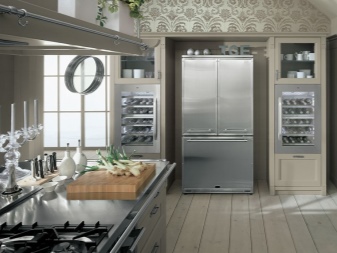
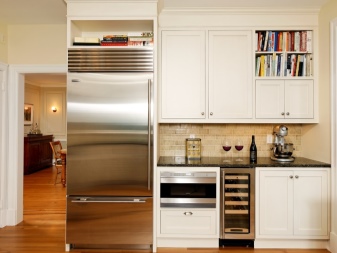
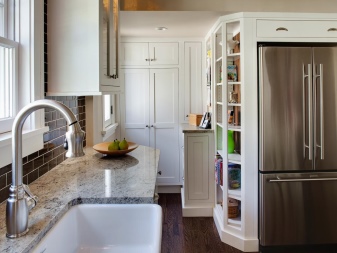

There are also disadvantages.
- This kitchen design option will require additional financial costs.
- Often, refrigerators with an additional cooling element and increased thermal insulation (and for embedding in a niche it is better to choose such) are less economical in energy consumption.
- Loss of usable space. To prevent the refrigerator in a niche from overheating, you need to leave gaps between it and the walls of the box - 5 cm on the sides and the same amount in the back. And to open the door, a few centimeters from at least one side are simply necessary. In small-sized Khrushchev kitchens, this moment can make the arrangement of a niche impossible.
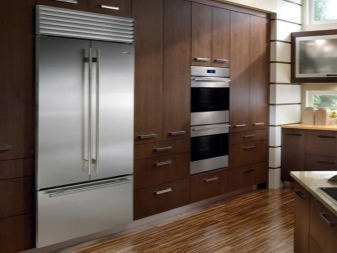
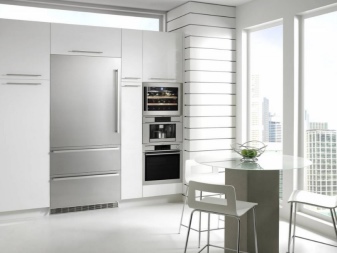
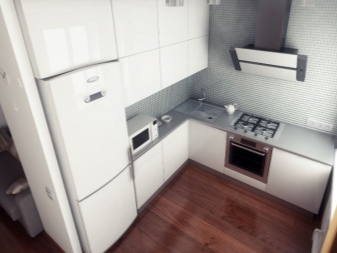
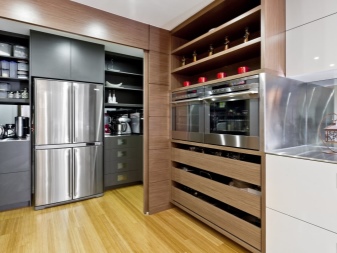
Niche dimensions and design
The plasterboard niche should be larger than the refrigerator. It is better to make the height of the niche the same as the height of the kitchen cabinets. If the height of the refrigerator does not reach this mark, then here you can place cabinets of the same design as the main kitchen set. Drywall can be used to decorate the entire kitchen unit, that is, it will also cover the space between the cabinets and the ceiling. Then the size of the niche will also reach the ceiling.
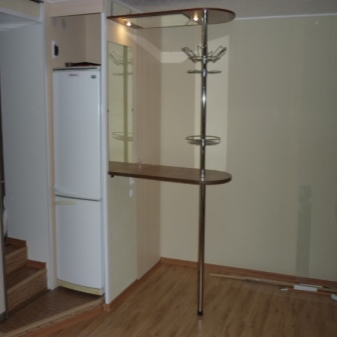
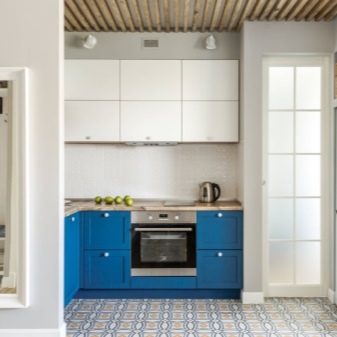
If there is a rear wall in the niche, then a hole must be made in it for ventilation and wires connecting the unit to the outlet.
Please note that two-chamber models sometimes have two wires: from the refrigerator and freezer compartments. The niche should leave at least 5 cm gaps on the sides of the refrigerator and at the back.
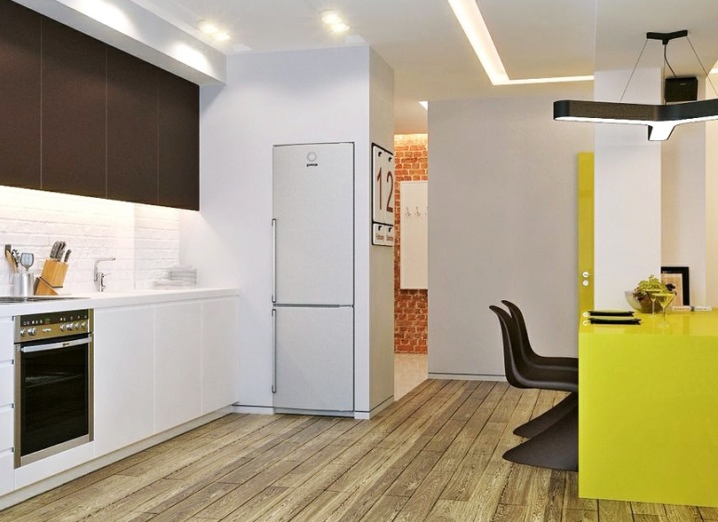
How to choose a refrigerator?
When choosing a refrigerator model that you want to put in a niche, you need to take into account some of its characteristics:
- sizes;
- compressor quality;
- thermal insulation;
- defrosting system;
- type of control.

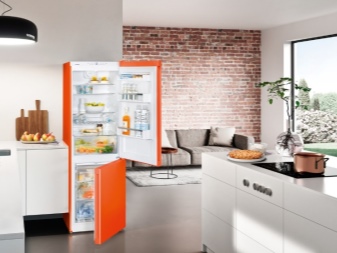

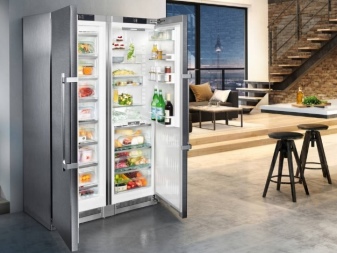
Of course, when choosing a refrigerator, you must first take into account its dimensions. This indicator should be 10-20 cm larger than the size of the niche. There should also be at least 5 cm from the back of the refrigerator to the wall, otherwise, if there is a weak compressor, it will overheat and break.
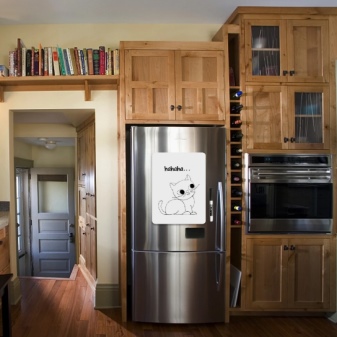
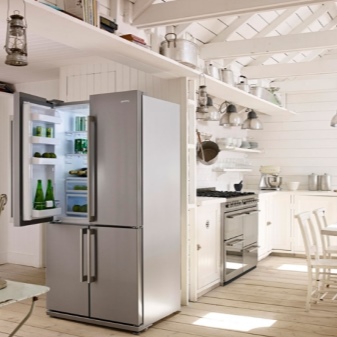
In classic two-compartment refrigerators, where the freezer is at the bottom, the compressor runs constantly. When the temperature in the chamber reaches the desired level, it works less intensively and thereby preserves the life of the unit. When the required temperature is reached, it reduces its power, which contributes to the duration of the operation of the refrigerator. Its inverter compressor is simpler than the more sophisticated versions, which also has a positive effect on the life of the refrigerator.
An additional cooling element and reinforced thermal insulation should be provided not only for refrigerators built into furniture, but also for niche refrigerators.
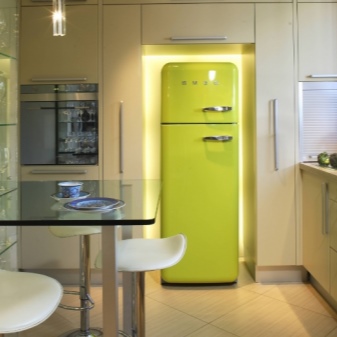
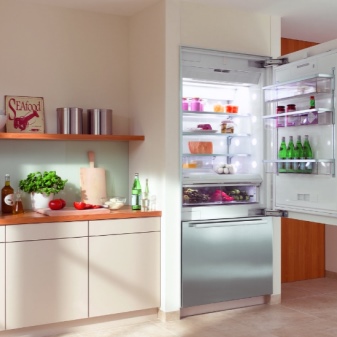
Models with antifrost system are always better than those that need to be defrosted manually. And if the refrigerator is in a niche, then even more so, because you create it so that the refrigerator is as less conspicuous as possible. If you have an electronic control system, it is better that it is located on the top of the refrigerator.

Installation rules
When you decide on the choice and find a suitable place for a niche, the wall needs to be leveled and plastered. Before installing the plasterboard frame, mark the ceiling. On one of the walls, mark the depth of the future structure, and on the other its width. Then make marks on the floor. Using a plumb line, transfer the points of intersection of the lines and connect them.
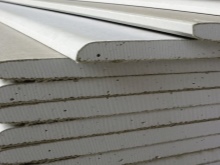
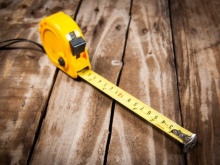
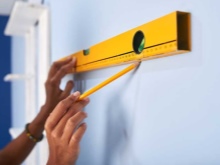
Then proceed with the installation of the profile to the wall on the dowel-nails. The UW 50 profiles (50 x 40 mm) are suitable for this. Install them on the floor and ceiling. Cut out the posts and insert them into the UW rails fixed to the floor, using a building level to mount the corner posts. The profiles are fastened together with self-tapping screws. The niche base is ready.
When making a plasterboard blank of the lower part, add half a centimeter to its width, and remove the excess after fixing it on the floor with a plane. Now make the side pieces. Sheathe the metal frame with plasterboard inside and out. Screw the ceiling piece to the upper ends of the side profiles.
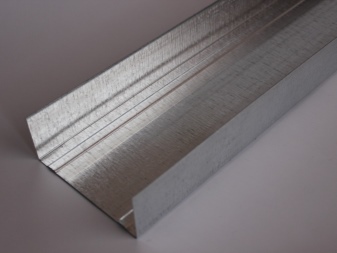
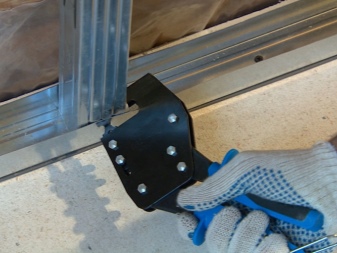
Examples in the interior
The arrangement of household appliances during kitchen repairs is a rather important and responsible process. You can diversify and decorate the kitchen interior in different ways, and a niche for a refrigerator is one such solution. The main thing is to think over the entire interior as a whole and, perhaps, an experienced designer will help you with this. Or use our tips, study examples and feel free to embody your ideas yourself.
- The white kitchen easily became related to the plasterboard niche of the same color. A shelf was made above the refrigerator so that the overall size of the niche corresponded to the height of the cabinets.
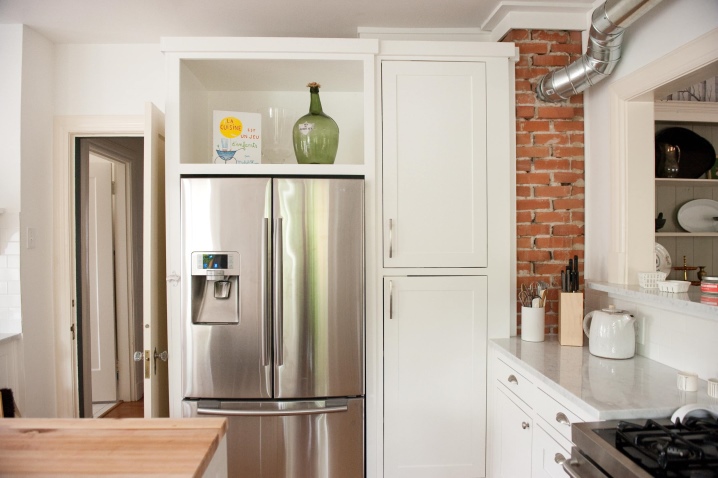
- Often the refrigerator is placed near the entrance, and it does not look very aesthetically pleasing. If you make a niche, you will be able to hide the refrigerator, organically fitting it into the headset adjacent to it.
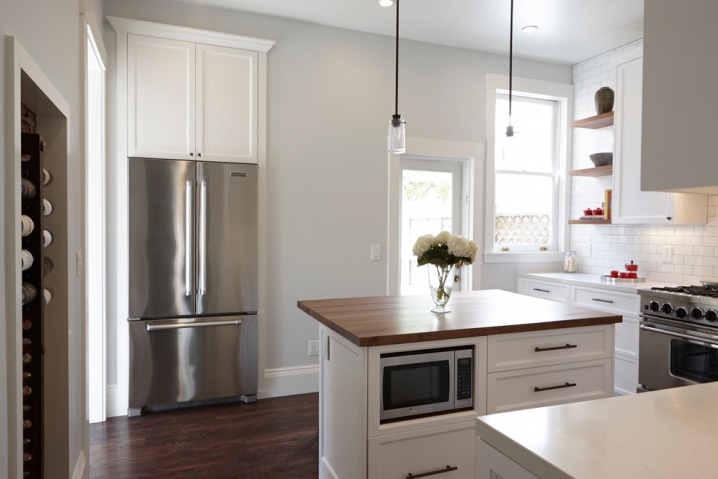
- In this example, we see that the kitchen space made it possible to select an entire corner of the room for a niche. After the wall was "moved" closer by installing a plasterboard corner, a kitchen was installed and a refrigerator was mounted with neat cabinets on top. Such a niche, of course, is done before finishing the premises.
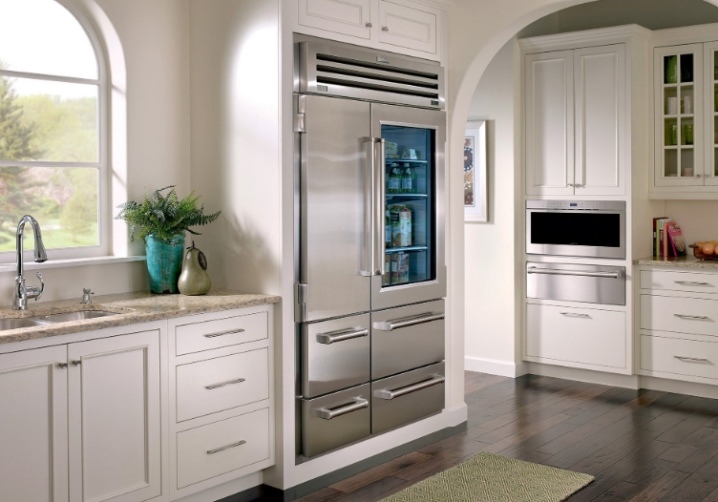
- In this photo, the niche has fairly dense walls, the interior looks holistic and harmonious. The niche not only hides the sides of the refrigerator, but also protects it from sunlight from the window and from dirt.
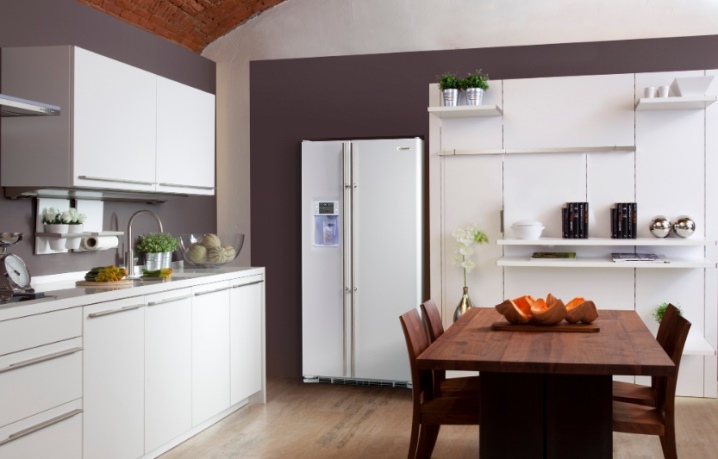













The comment was sent successfully.